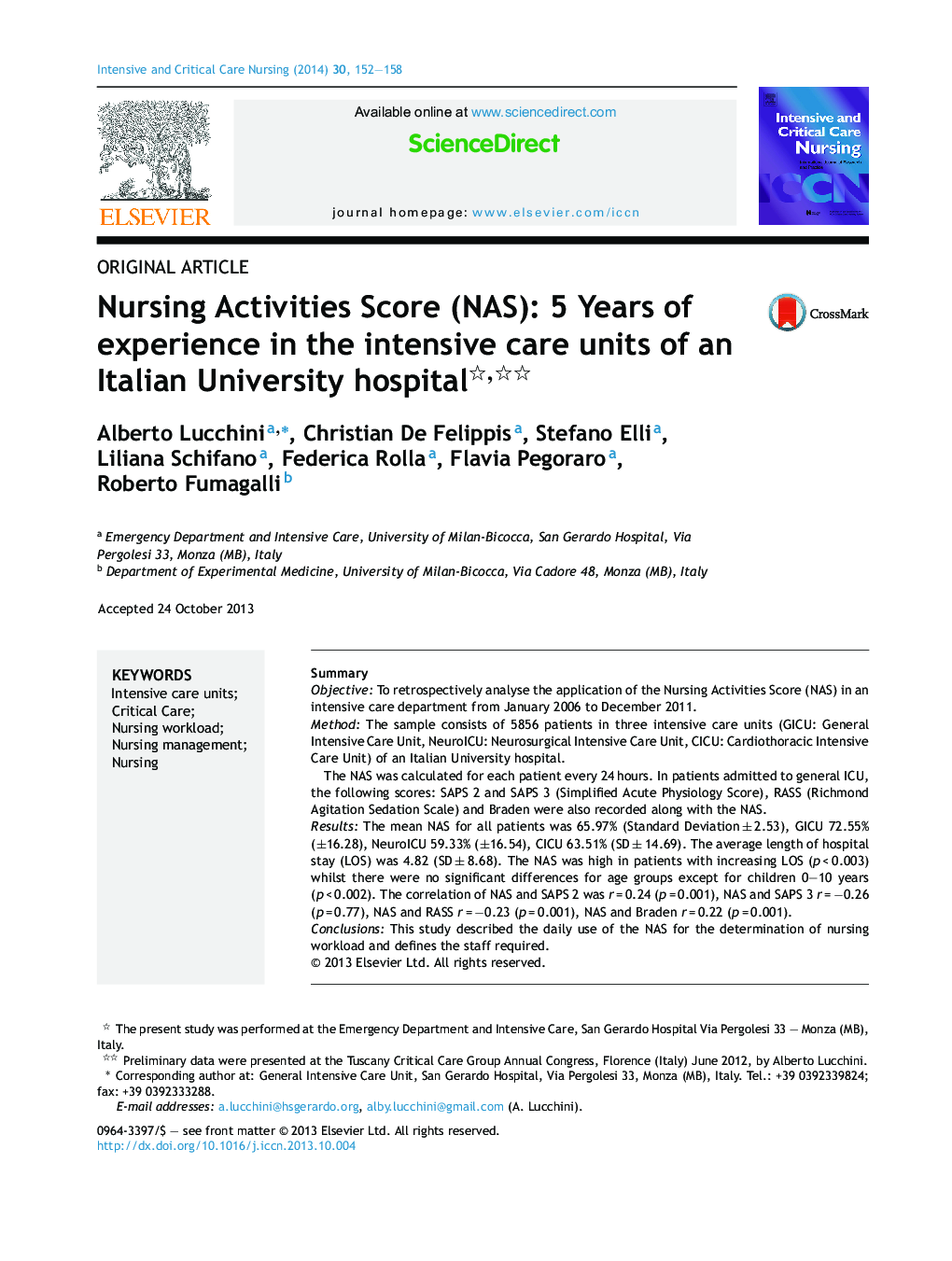| Article ID | Journal | Published Year | Pages | File Type |
|---|---|---|---|---|
| 2652145 | Intensive and Critical Care Nursing | 2014 | 7 Pages |
SummaryObjectiveTo retrospectively analyse the application of the Nursing Activities Score (NAS) in an intensive care department from January 2006 to December 2011.MethodThe sample consists of 5856 patients in three intensive care units (GICU: General Intensive Care Unit, NeuroICU: Neurosurgical Intensive Care Unit, CICU: Cardiothoracic Intensive Care Unit) of an Italian University hospital.The NAS was calculated for each patient every 24 hours. In patients admitted to general ICU, the following scores: SAPS 2 and SAPS 3 (Simplified Acute Physiology Score), RASS (Richmond Agitation Sedation Scale) and Braden were also recorded along with the NAS.ResultsThe mean NAS for all patients was 65.97% (Standard Deviation ± 2.53), GICU 72.55% (±16.28), NeuroICU 59.33% (±16.54), CICU 63.51% (SD ± 14.69). The average length of hospital stay (LOS) was 4.82 (SD ± 8.68). The NAS was high in patients with increasing LOS (p < 0.003) whilst there were no significant differences for age groups except for children 0–10 years (p < 0.002). The correlation of NAS and SAPS 2 was r = 0.24 (p = 0.001), NAS and SAPS 3 r = −0.26 (p = 0.77), NAS and RASS r = −0.23 (p = 0.001), NAS and Braden r = 0.22 (p = 0.001).ConclusionsThis study described the daily use of the NAS for the determination of nursing workload and defines the staff required.
